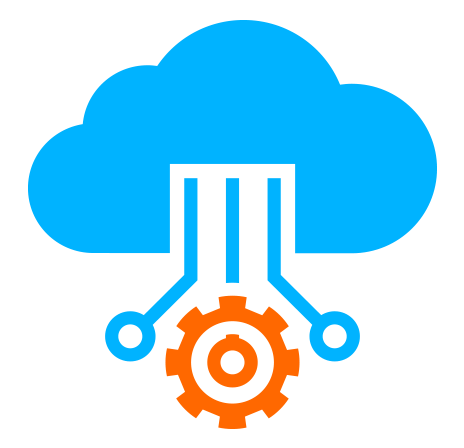 Server
Colocation
Server
Colocation
 CDN
Network
CDN
Network
 Linux Cloud
Hosting
Linux Cloud
Hosting
 VMware Public
Cloud
VMware Public
Cloud
 Multi-Cloud
Hosting
Multi-Cloud
Hosting
 Cloud
Server Hosting
Cloud
Server Hosting
 Kubernetes
Kubernetes
 API Gateway
API Gateway

AI is no longer experimental — it's the foundation of next-gen business, science, defense, and even art. From training LLMs like GPT-4 to running real-time inference for autonomous vehicles or predictive analytics, the demand for high-performance compute infrastructure has exploded.
In 2024, NVIDIA stands at the forefront of this AI infrastructure evolution. While the NVIDIA DGX H100 has long been the gold standard for large-scale AI workloads, the recent debut of the NVIDIA DGX Spark has added a new layer of interest — especially for enterprises seeking scalability with flexibility.
But here’s the question that’s on everyone’s mind:
What does the NVIDIA DGX Spark actually cost, and how does it stack up against the H100 in terms of value, performance, and deployment strategy?
In this blog, we’ll break down:
What makes the DGX Spark unique
A price comparison with the DGX H100
Real-world use cases
How businesses can choose the right infrastructure path
And how cloud, server hosting, and managed infrastructure can make it more accessible
The NVIDIA DGX Spark isn’t a hardware box like the H100 — it’s a cloud-native AI supercomputing platform that offers NVIDIA’s latest GPU architecture (Hopper or Grace Hopper-based) through a managed cloud environment. Spark leverages GPU clusters and accelerators that are pre-configured, performance-tuned, and available as-a-service.
AI infrastructure-as-code
Designed for developers, researchers, and ML teams
Hosted on NVIDIA’s own cloud or on partner platforms
Able to scale from 1 node to 1000+ with zero hardware management
This makes it ideal for organizations that want access to cutting-edge GPU server performance without dealing with the cost and complexity of physical deployment.
Let’s lay it out with clarity. While both offer premium AI computing capabilities, the biggest difference lies in delivery model, flexibility, and pricing structure.
|
Feature |
NVIDIA DGX H100 |
NVIDIA DGX Spark |
|
Form |
Physical server hardware |
Cloud-native AI platform (PaaS) |
|
Delivery |
On-prem or colocated in data centers |
Deployed over cloud (NVIDIA DGX Cloud, etc.) |
|
Scalability |
Fixed to 8x H100 per node |
Infinite scaling (multi-node architecture) |
|
Ease of Access |
Hardware delivery, setup, cooling required |
Ready-to-use via API or UI |
|
Target Audience |
Enterprises with infra budgets |
Teams needing agility without CapEx |
|
Base Price (Est.) |
₹3.7–4 crore per unit (incl. support) |
Starts at ₹6,000–₹7,000/hour (on-demand) |
Here’s where it gets interesting. Since DGX Spark is cloud-native, pricing is based on usage, much like other cloud server platforms.
As of 2024, DGX Spark pricing works as follows:
On-demand instance (8x H100 equivalent):
₹6,500 – ₹7,500 per hour depending on region and features
(Includes compute, memory, interconnect, support)
Reserved/committed plans (monthly/yearly):
₹40 lakh/month – ₹50 lakh/month for 8 GPU node clusters
Significant savings when committing to longer durations
Burst cluster pricing (for short-term needs):
Hourly or daily rates with high-availability and autoscaling
Good to know: You’re not paying for power, cooling, maintenance, or on-site support. That’s bundled in, which can reduce your TCO over time.
The DGX H100 server is a powerhouse. It features:
8x NVIDIA H100 Tensor Core GPUs
640 GB of high-bandwidth GPU memory
2x Intel Xeon CPUs, 2 TB DDR5 RAM
NVLink/NVSwitch interconnects
Used by large enterprises, research labs, and cloud providers, a single DGX H100 unit can cost between ₹3.5 crore to ₹4.2 crore in India (depending on service agreements and vendor markup).
Add to that:
Hosting (rack + cooling): ₹1.5–2 lakh/month
Power (6–9 kW load): ₹50,000+/month
Dedicated NOC, uptime, and physical security if colocated
Unless you’re running 24x7 AI training or inference, this level of CapEx might not make sense for every organization.
Here’s how to make the decision easier:
You want cloud-native agility
You prefer Opex-based consumption
You need to spin up clusters quickly
Your workload is variable or project-based
You don't want to manage servers, cooling, or infrastructure
You have predictable, heavy AI workloads
You need low-latency, on-prem control
You’ve already invested in colocation or private cloud
Your organization values hardware-level optimization
You want to amortize costs over multiple years
Let’s compare two organizations side-by-side:
Chooses DGX Spark
Monthly usage: 300 hours (project-based)
Average cost: ₹21 lakh/month
Cloud-integrated with existing DevOps toolchain
Scales up for demo days, scales down for R&D
Buys 2x DGX H100 units
CapEx: ₹8 crore upfront
Hosts in government Tier-III data center
Consistent 24x7 AI model training
Maintains full control over environment, data security
Both choices make sense — it all comes down to usage pattern, budget flexibility, and infrastructure goals.
You don’t have to go directly to NVIDIA to get access to DGX-class compute. Managed cloud hosting providers like Cyfuture Cloud now offer:
GPU cloud instances (NVIDIA A100, H100) on-demand
Fully managed HPC clusters
Hybrid deployment (your app in Cyfuture Cloud + backend in DGX)
SLA-backed uptime and cost visibility
This is where DGX Spark and platforms like it become game changers — especially for India-based teams who want world-class compute without the headache of importing, setting up, and maintaining expensive hardware.
If you're leaning toward NVIDIA's ecosystem — either DGX H100 or Spark — here’s how to save money without sacrificing performance:
DGX Spark offers spot pricing for non-critical tasks — you can save up to 80%.
Train on H100, but deploy inference models on A100 or even RTX 6000 Ada to cut costs.
Work with a local provider like Cyfuture to negotiate cloud + storage + compute bundles.
Keep latency-sensitive workloads local and burst to the cloud (DGX Spark) for peak loads.
NVIDIA has redefined AI infrastructure, and now offers two distinct but powerful options:
DGX H100 — Unparalleled raw performance for those who can commit to hardware
DGX Spark — Cloud-based agility with nearly identical power, minus the CapEx
In today’s fast-paced AI world, cloud-native deployments are winning — not because they’re always cheaper, but because they offer flexibility, scalability, and access to cutting-edge GPU tech without locking you into heavy infrastructure decisions.
Whether you’re a fintech startup fine-tuning an LLM or a public sector institution decoding genomics, both options serve different but equally crucial roles.

Let’s talk about the future, and make it happen!
By continuing to use and navigate this website, you are agreeing to the use of cookies.
Find out more


